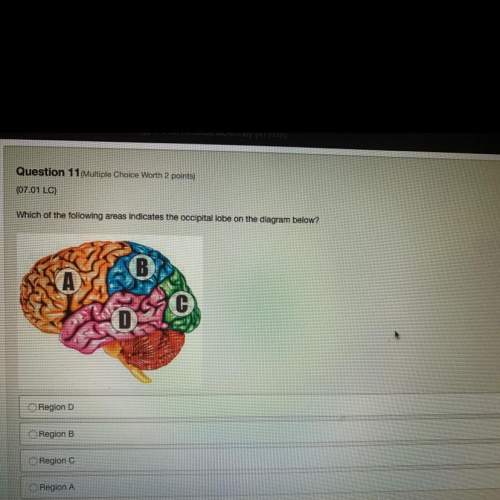
Biology, 18.09.2019 04:00 stinkbugg310
Vision begins when light rays are reflected off an object and enter the eyes through the cornea, the transparent outer covering of the eye. the cornea bends or refracts the rays that pass through a round hole called the pupil. the iris, or colored portion of the eye that surrounds the pupil, opens and closes (making the pupil bigger or smaller) to regulate the amount of light passing through. the light rays then pass through the lens, which actually changes shape so it can further bend the rays and focus them on the retina at the back of the eye. the retina is a thin layer of tissue at the back of the eye that contains millions of tiny light-sensing nerve cells called rods and cones, which are named for their distinct shapes. cones are concentrated in the center of the retina, in an area called the macula. in bright light conditions, cones provide clear, sharp central vision and detect colors and fine details. rods are located outside the macula and extend all the way to the outer edge of the retina. they provide peripheral or side vision. rods also allow the eyes to detect motion and us see in dim light and at night. these cells in the retina convert the light into electrical impulses. the optic nerve sends these impulses to the brain where an image is produced.
you are looking at a brightly colored hot air balloon rise in the sunny sky. what is the path the light takes in order for you to see the balloon and the individual colors?
a) cornea - lens - pupil - retina - cones - optic nerve - brain - light
b) cornea - pupil - retina - cones - optic nerve - brain - light - lens
c) light - cornea - pupil - lens - retina - cones - optic nerve - brain
d) light - pupil - lens - cornea - retina - optic nerve - cones - brain
eliminate

Answers: 1


Another question on Biology

Biology, 21.06.2019 15:50
How does land development destroy ecosystems? it increases human carrying capacity too rapidly. it converts them into residential or agricultural areas. it forces humans to import non-native plants and animals. it expands the natural range of native wildlife species.
Answers: 3

Biology, 21.06.2019 19:00
Can someone me with this and tell me what’s fracking and what does it have to do with carbon, carbon dioxide, or fossil fuels?
Answers: 2

Biology, 22.06.2019 04:30
Asap i will reward you brainliest for best which sentence about protists is accurate? all protists are unicellular and microscopic in nature. they have organelles, so protists are eukaryotic in nature. all protists make their own energy through photosynthesis.
Answers: 1

Biology, 22.06.2019 07:00
Common symptoms of an iron-defiency anemia include muscle weakness shortness of breath and lightheadedness why does iron deficiency causes these symptoms
Answers: 2
You know the right answer?
Vision begins when light rays are reflected off an object and enter the eyes through the cornea, the...
Questions


Mathematics, 06.11.2020 21:30


Mathematics, 06.11.2020 21:30




English, 06.11.2020 21:30

Chemistry, 06.11.2020 21:30

English, 06.11.2020 21:30




Social Studies, 06.11.2020 21:30


Arts, 06.11.2020 21:30

History, 06.11.2020 21:30

Mathematics, 06.11.2020 21:30





